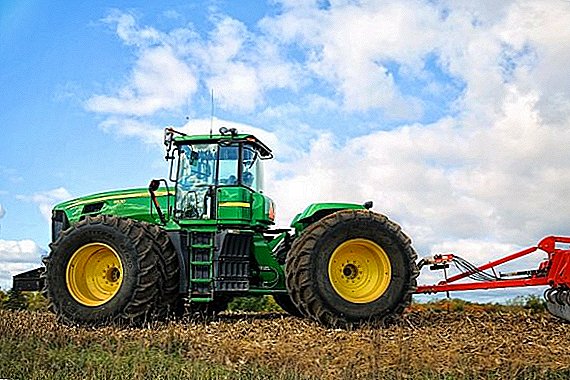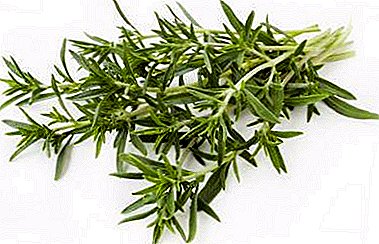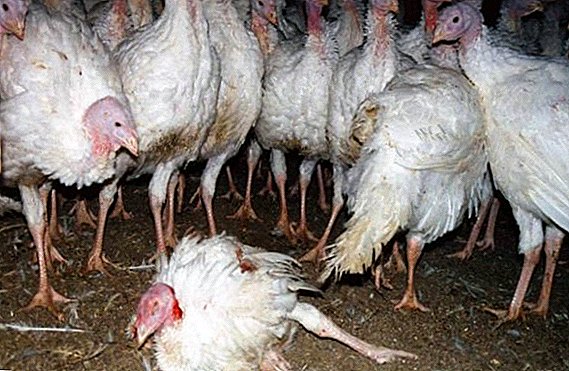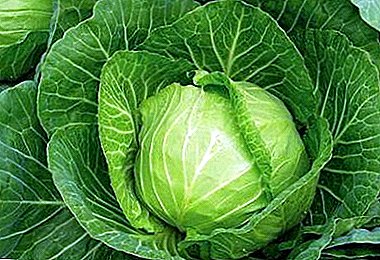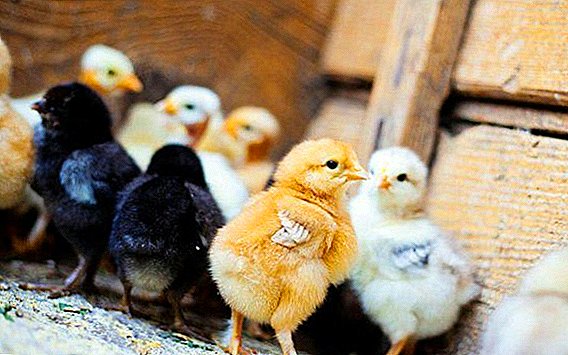 Chickens always require increased attention from breeders, because the immunity of babies is not yet able to withstand the harmful effects of the environment, so the chicks easily pick up various diseases. If you do not promptly respond to the problems encountered, then there is a risk of losing all the livestock. One of the unpleasant symptoms in chickens are lowered wings. What they can testify about, and how to prevent danger - let's talk in more detail.
Chickens always require increased attention from breeders, because the immunity of babies is not yet able to withstand the harmful effects of the environment, so the chicks easily pick up various diseases. If you do not promptly respond to the problems encountered, then there is a risk of losing all the livestock. One of the unpleasant symptoms in chickens are lowered wings. What they can testify about, and how to prevent danger - let's talk in more detail.
The reasons
Depending on the associated symptoms, lowered wings in chickens can indicate a number of very common health problems. However, sometimes the explanations for this disturbing fact are quite simple. 
Soaked feathers
Seeing the lowered wings of the chicks, first touch them, check the feathers for moisture. The wet wing is heavier, so the baby cannot lift it.
Did you know? A few days before hatching from the egg, the chicken begins to communicate with the mother hen. Crumbs at this age are able to make up to 30 sounds, including a squeak of pleasure or anxiety.
The reasons for this phenomenon are simple:
- high humidity in the hen house;
- chicks climb into the trough.
To solve the problem in this case is easy:
- To avoid dampness in the room, provide ventilation in it, which will keep the humidity at the level of 55-75%.
- If you put nipple drinkers in a hen house, the chickens will receive dosed water and will not get wet in the puddles.

Dislocation or fracture
When a chick has one wing below the other or is curved in an unnatural way, it is worth checking it for a fracture or dislocation.
For this:
- Carefully with your fingers, walk around the problem area. In the event of a fracture, you will feel the head of the bone, you may even hear crunching;
- in rare cases, a wound with a fragment of bone protruding from it can be seen under the feathers.
Having found a fracture in the chick, first fix the injured limb.
Important! If the chick has an open fracture, then before fixing it is necessary to treat the wound: carefully remove the feathers with a tweezers, swab dipped in hydrogen peroxide, walk along the edges, and then apply an antibacterial agent.
It will be possible to do this in a few steps, and for fixing you will need a piece of thick cardboard and adhesive plaster:
- Spread the damaged wing and attach a strip of cardboard to it.
- Attach the fixture with several turns of the adhesive plaster, and then tie the limb itself to a small calf.
- Dressing leave for 2-3 days in the case of dislocation, and at the turn - for a week and a half.

Dyspepsia
Sometimes in the chick, in addition to the wings lowered, there are also:
- lethargy;
- drowsiness;
- weakness;
- brown, yellow-green feces.
Such a set of symptoms signals dyspepsia, or digestive problems that chickens often suffer in the first month of life.
Learn how to treat and prevent chickens' diseases.
Timely prevention will help protect chicks from this:
- the room where it is planned to settle the young growth, preheat up to 31 ° С. Provide a warm litter: it will not allow the undercooling of the abdomen and will stimulate the active absorption of residual yolk in the body of the chick. This will contribute to better digestion and absorption of nutrients;
- add in the first feed of chicks mineral and vitamin supplements (for example, "Forte Universal");
- Do not give chalk, eggshells and other feed containing lime to the chicks in the first 24 hours of life.
 If, however, it was not possible to protect the young growth, then it is possible to restore the normal functioning of the gastrointestinal tract with the help of easily digestible food: cottage cheese, millet, and oatmeal. To feed the chickens need 5-7 times a day.
If, however, it was not possible to protect the young growth, then it is possible to restore the normal functioning of the gastrointestinal tract with the help of easily digestible food: cottage cheese, millet, and oatmeal. To feed the chickens need 5-7 times a day.Did you know? On average, chickens can memorize up to 10 individuals.
Bronchopneumonia
Bronchopneumonia is a disease in chickens characterized by inflammation of the mucous bronchi and lung tissue.
You can identify it by the following features:
- lethargy;
- lack of appetite;
- lowered wings.
To prevent the development of such a serious disease will help:
- the correct microclimate in the chicken coop: the temperature is about 30 ° C, the oxygen is at a level of at least 16%;
- dry and clean bedding.
 In case of chickens suffering from bronchopneumonia, it is better to call the veterinarian for consultation. To take any drugs without his appointment is undesirable.
In case of chickens suffering from bronchopneumonia, it is better to call the veterinarian for consultation. To take any drugs without his appointment is undesirable.Hypovitaminosis A
When the chicks lack retinol, they begin hypovitaminosis A due to a metabolic disorder.
The problem can be identified by the following features:
- lowered wings;
- ruffled, untidy feathers;
- poor appetite;
- weakness;
- blurred vision at dusk i.e. night blindness.
For the treatment of hypovitaminosis, it is necessary to increase the level of retinol in feed and supplements. To do this, periodically give the young grated carrots, grass meal. 
Coccidiosis
This is a very dangerous disease that excites coccidia - bacteria that live in the intestines and destroy its epithelial cells. Because of this, the integral structure of the walls is disturbed, necrosis occurs, and, as a result, peristalsis and nutrient absorption are deteriorated, and this is a direct way to starvation.
Important! Most often, such a danger threatens the youngsters in warm, rainy weather, when at high humidity pathogenic bacteria develop.
2-3 days of existence in improper conditions - and the chickens will show all the symptoms:
- loss of appetite;
- drowsiness, lethargy;
- lowered wings;
- thirst for heat;
- liquid discharge greenish-whitish color;
- traces of blood in feces.
To provoke the development of the disease can:
- sudden change of diet;
- stress.
 Prevention of coccidiosis in poultry will help prevention of the drug "Koktsidiovit." Based on it, the mixture is prepared: 1.25 g of the drug is added to 1 kg of feed, mixed thoroughly and given several times a day.
Prevention of coccidiosis in poultry will help prevention of the drug "Koktsidiovit." Based on it, the mixture is prepared: 1.25 g of the drug is added to 1 kg of feed, mixed thoroughly and given several times a day.It will also be helpful for you to learn how to treat coccidiosis in poultry, as well as how to treat coccidiosis in adult chickens and broilers.
For the treatment of "Koktsidiovitom" need to take a large dose - 2.5 g for the same amount of feed. Course duration - at least 7 days.
Also, Baycox (for chickens over 2 weeks of age) is actively used to combat coccidiosis. This drug allows simultaneous use with other similar means.
According to the instructions, the Baycox solution is prepared on the basis of water: 1 ml of the drug is dissolved in 1 liter of water and allowed to drink to the chicks during the day.  Lowered wings in chickens - an alarming symptom. It may indicate various problems in the life of the young, so this factor should always be paid attention to. With proper timely response, the chicks will be able to protect from many dangers, thus ensuring the health of the farm.
Lowered wings in chickens - an alarming symptom. It may indicate various problems in the life of the young, so this factor should always be paid attention to. With proper timely response, the chicks will be able to protect from many dangers, thus ensuring the health of the farm.



